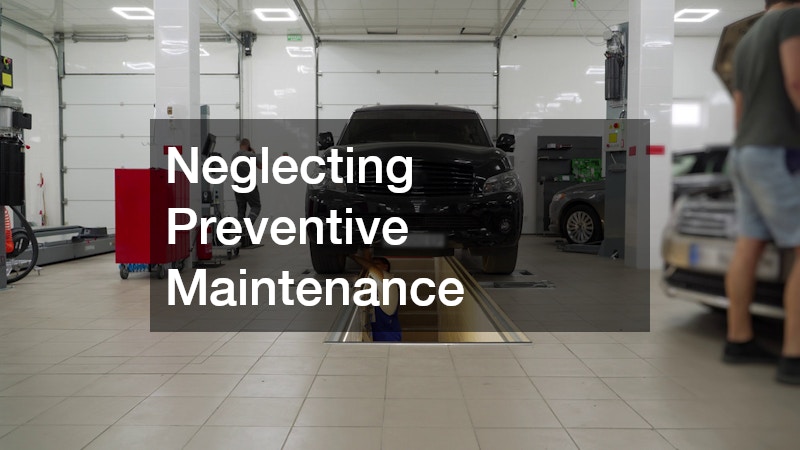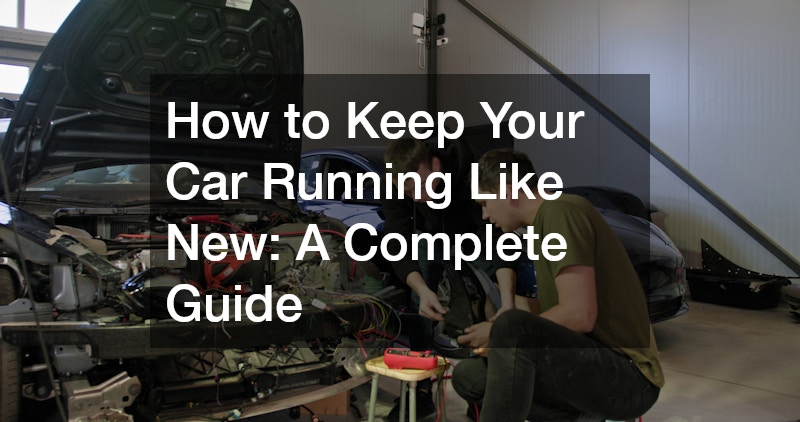Introduction
DIY car maintenance has grown in popularity over the past decade, with more than 68% of U.S. car owners now performing at least some type of repair or maintenance at home, according to a 2024 AAA consumer study. The reasons are obvious: significant cost savings, the satisfaction of learning hands-on skills, and the convenience of working on your own schedule. For many enthusiasts, understanding how their vehicle operates is both a hobby and a practical life skill.
However, this surge in DIY activity comes with risks. Mistakes during home-based auto repair can lead to costly damages, averaging $1,250 per incident (source: CarMD 2024 Vehicle Health Index). From improperly installed parts to overlooked fluid maintenance, minor oversights can quickly escalate into serious safety hazards or expensive repairs. Even seasoned DIY mechanics occasionally encounter challenges when dealing with hidden issues such as structural damage, electrical malfunctions, or suspension misalignment.
The purpose of this guide is to highlight the 10 most common mistakes DIY mechanics make, demonstrate how to avoid them, and provide actionable tips for safe, effective, and efficient auto repair practices. Whether it’s addressing engine performance issues, maintaining vehicle appearance, or ensuring proper safety measures in a home garage, the strategies outlined here aim to empower DIY enthusiasts to tackle repairs with confidence.
To support safe and effective practices, authoritative resources like the AAA Car Care Research Center and the National Highway Traffic Safety Administration (NHTSA) provide valuable guidance, including inspection checklists, safety protocols, and diagnostic advice. Utilizing these resources allows DIY mechanics to adopt industry-standard practices, enhancing the quality, durability, and safety of their home repairs.
Additionally, integrating strategies such as “vehicle maintenance,” “car fixing,” and “DIY mechanical repairs” helps DIYers systematically approach each task. From understanding basic engine systems to performing preventive maintenance and minor body repairs, a well-informed mechanic can not only save money but also extend the lifespan of their vehicle, reduce environmental impact through proper fluid disposal, and avoid costly emergency repairs.
In short, while DIY auto repair offers independence and financial benefits, it demands diligence, proper tools, and knowledge of best practices. This guide will walk you through the 10 critical mistakes to avoid, ensuring your DIY repairs are safe, effective, and long-lasting.
#1: Misdiagnosing the Real Problem
One of the most common mistakes in auto repair is jumping into fixes without properly diagnosing the root cause. For instance, a car that rattles could have a loose engine mount, worn suspension, or even minor damage to the exhaust system. Misdiagnosis often results in replacing perfectly fine parts, wasting both time and money.
Why it happens:
DIYers tend to rely on visible damage or symptoms without using diagnostic tools. Without careful examination, hidden damage—like bent frames, stressed suspension components, or internal engine wear—can go unnoticed, leading to repeated breakdowns.
Actionable Tips:
-
Inspect thoroughly: Use a flashlight, mirror, and hand tools to check undercarriages, engine bays, and frames. Look for cracks, misaligned panels, or leaks.
-
Use diagnostic tools: Invest in an OBD-II scanner for engine codes or basic fault detection. Many modern vehicles have sensors that help identify problems quickly.
-
Document findings: Take notes and photos before starting repairs to track progress and identify recurring issues.
-
Avoid assumptions: If unsure, cross-reference the symptoms with manuals or online forums before purchasing parts.
Example: A small fender bender may only show scratches outside, but auto damage repair experts know the frame can be subtly bent. Catching this early prevents serious handling issues later.
#2: Neglecting Preventive Maintenance

Many DIY mechanics ignore scheduled maintenance until a problem becomes serious. Skipping oil changes, fluid top-offs, brake inspections, or belt replacements can result in costly repairs that could have been avoided. Professional auto repair shops emphasize preventive care because it protects the engine, transmission, and other vital systems, extending vehicle longevity.
Actionable Tips:
-
Set reminders: Use your car manual or mobile apps to track mileage-based maintenance.
-
Check belts and hoses: Replace frayed or cracked belts to avoid breakdowns.
-
Inspect brakes and tires regularly: Low brake fluid or worn brake pads reduce safety and efficiency.
-
Use quality parts: Even when performing DIY maintenance, stick to OEM or high-quality aftermarket replacements.
Example: A neglected timing belt can snap without warning, leading to engine failure. Regular inspections prevent this and save thousands in repairs.
#3: Ignoring Vehicle Appearance and Protection
Vehicle appearance isn’t just cosmetic—it protects against environmental damage. DIY mechanics often skip proper preparation before applying auto tint, leaving windows susceptible to peeling or bubbling. Properly applied tint also shields interiors from UV rays, reducing heat buildup and prolonging dashboard and seat life.
Actionable Tips:
-
Clean surfaces thoroughly: Use alcohol-based cleaners to remove dirt, oil, and residues.
-
Work in a dust-free environment: Even small particles trapped under tint create imperfections.
-
Follow curing instructions: Allow the film to set for 24–48 hours before rolling windows up or down.
-
Check local regulations: Window darkness limits vary by state; always stay compliant.
Example: Poorly applied tint can reduce visibility at night, creating a safety hazard. Following correct surface preparation prevents these issues.
#4: Overlooking Oil and Fluid Maintenance
Many DIY mechanics underestimate the importance of timely auto oil change and other fluid replacements. Dirty oil leads to increased friction, overheating, and accelerated engine wear. Brake, transmission, and coolant fluids also degrade over time, impacting vehicle performance and safety.
Actionable Tips:
-
Change oil at manufacturer-recommended intervals: Typically every 3,000–5,000 miles, depending on oil type.
-
Check fluid levels monthly: Top off engine oil, brake fluid, transmission fluid, and coolant.
-
Proper disposal: Take used oil to recycling centers or approved collection sites.
-
Replace filters consistently: Oil, air, and cabin filters help your car run efficiently.
Example: Failing to replace brake fluid can lead to reduced braking efficiency, risking accidents. Regular auto oil change routines prevent such scenarios.
#5: Failing to Manage Exhaust and Ventilation Systems
Working in enclosed garages without proper ventilation is dangerous. Carbon monoxide from engines is colorless, odorless, and lethal in high concentrations. Many DIY mechanics overlook installing or using an auto exhaust extraction system, increasing risk during extended repairs.
Actionable Tips:
-
Work in open spaces: Whenever possible, repair outdoors or in well-ventilated areas.
-
Install fume extraction: Affordable systems remove exhaust gases directly from the garage.
-
Monitor air quality: Carbon monoxide detectors can alert you to unsafe conditions.
-
Avoid engine idling indoors: Only run the engine briefly when necessary.
Example: Even a 10-minute engine run in a closed garage can produce dangerous carbon monoxide levels. Safety-first ventilation is non-negotiable.
#6: Skipping Professional Inspections
Overconfidence leads many DIY enthusiasts to attempt repairs beyond their expertise. While basic maintenance is safe at home, some issues require certified auto mechanic intervention. Electrical systems, transmissions, and advanced electronics are best inspected by professionals to prevent accidents or damage.
Actionable Tips:
-
Schedule annual professional checkups: Even experienced DIYers benefit from expert diagnostics.
-
Use service manuals: Manufacturer manuals provide step-by-step guidance.
-
Watch certified tutorials: Platforms like YouTube or ASE-approved courses enhance skills safely.
-
Know your limits: Attempt only tasks you are confident completing.
Example: A miswired electrical component can short-circuit the car, causing expensive damage. Professional insight prevents these risks.
#7: Overlooking Minor Glass or Windshield Damage

Small chips or cracks may seem minor, but they compromise visibility and structural integrity. Ignoring timely cracked windshield replacements can turn a minor crack into a full replacement scenario, increasing costs and safety risks.
Actionable Tips:
-
Repair chips quickly: Small cracks (<6 inches) can often be repaired.
-
Wear protective gear: Gloves and goggles prevent injury during glass handling.
-
Use proper adhesives: Professional-grade sealants prevent leaks and movement.
-
Inspect after repair: Check for fogging or air bubbles post-installation.
Example: A rock chip left untreated can spread across the windshield on the next highway trip, forcing a complete replacement.
#8: Underestimating Structural or Paint Damage
Even minor collisions can cause frame misalignment or hidden rust spots. Proper collision repair ensures the vehicle remains safe and maintains resale value. Neglecting these repairs leads to uneven tire wear, poor handling, and long-term structural issues.
Actionable Tips:
-
Inspect frames and panels: Check for uneven gaps between doors and fenders.
-
Use measuring tools: Tape measures or laser alignment tools can detect misalignment.
-
Professional checkups: Certain frame or airbag sensor repairs require certified intervention.
-
Paint protection: After dent removal, repainting prevents corrosion.
Example: Ignoring a minor rear-end collision could lead to suspension misalignment, affecting handling and tire longevity.
#9: Neglecting Car Cleaning and Detailing
A dirty car isn’t just unsightly—it affects performance and longevity. Dirt can accumulate in engine bays, wheel wells, and undercarriages, leading to corrosion and mechanical failures. Regular auto detailing maintains both aesthetics and vehicle integrity.
Actionable Tips:
-
Wash monthly: Include wheel wells and underbody.
-
Vacuum interiors: Remove debris that can clog ventilation or damage electronics.
-
Protect surfaces: Apply wax or sealants to prevent corrosion.
-
Use microfiber towels: Prevent scratching paint during cleaning.
Example: Accumulated dirt on brake lines can accelerate corrosion, affecting braking performance.
#10: Ignoring Window and Glass Replacement Needs
Loose seals, fogging, or cracked glass reduce comfort and safety. Proper auto window replacements improve insulation, reduce wind noise, and maintain visibility. Skipping inspections post-replacement leads to leaks, fogging, or sensor errors in advanced vehicles.
Actionable Tips:
-
Inspect seals: Ensure rubber gaskets fit snugly after installation.
-
Test for leaks: Spray water around edges to check for infiltration.
-
Use OEM parts: Maintains manufacturer specifications.
-
Calibrate sensors: Ensure driver-assist systems work correctly after replacements.
Example: Poorly installed windows can lead to water leaks, damaging interiors and electronics.
Conclusion
DIY auto repair can be both satisfying and cost-effective, but it demands careful planning, technical knowledge, and respect for safety protocols. While taking matters into your own hands can save money, the Auto Care Association reports that Americans collectively spend over $600 billion annually on vehicle maintenance and repairs, much of which stems from avoidable mistakes. With the right approach, many of these costs can be reduced significantly by combining preventive maintenance, informed repair techniques, and professional guidance when necessary.
One of the most important takeaways from this guide is the value of gradually building your mechanical skills. Simple maintenance tasks—like routine oil changes, fluid checks, and tire inspections—are excellent starting points for any DIY mechanic. Over time, learning to diagnose problems accurately, handle minor damage, and use the proper tools will enable you to tackle more complex tasks with confidence and efficiency.
Safety remains paramount. Many vehicle components, such as electrical systems, structural frames, and airbags, require professional expertise. Understanding your limits and recognizing when to consult certified professionals is just as important as mastering your DIY skills. Resources like the AAA Car Care Guide and NHTSA vehicle safety resources provide authoritative guidance to help DIYers maintain vehicles safely, offering step-by-step instructions, safety tips, and diagnostic advice.
Beyond safety, proper preventive maintenance can significantly extend the lifespan of your car. Regular inspections, timely auto damage repairs, and professional consultations for complex systems ensure your vehicle continues to perform reliably. Additionally, proper care—from window and glass maintenance to auto detailing—not only preserves aesthetics but also enhances long-term value, comfort, and safety.
For further learning, DIY mechanics can explore reputable platforms like NAPA Know How Blog for detailed tutorials, or YourMechanic Resources for professional tips and troubleshooting guides. The Consumer Reports Car Maintenance Guide is another invaluable reference, providing unbiased evaluations of common DIY procedures, vehicle systems, and recommended maintenance schedules.
In conclusion, embracing DIY auto repair with diligence, continuous learning, and careful attention to detail enables enthusiasts to save money, protect their vehicles, and cultivate a deeper understanding of automotive systems. By avoiding the common mistakes highlighted in this guide, and leveraging authoritative resources, DIY mechanics can enjoy a safer, more efficient, and more rewarding car maintenance experience.
Frequently Asked Questions
1. How often should I perform DIY maintenance?
Most vehicles require maintenance every 3,000–5,000 miles, but always follow manufacturer guidelines.
2. Can minor collisions be repaired at home?
Yes, but structural damage and airbag repairs require professional attention.
3. Are OEM parts better for DIY repairs?
Yes, OEM parts ensure compatibility, durability, and compliance with warranties.
4. How do I know when to call a mechanic?
Complex repairs involving transmission, electronics, or structural frames should always involve a professional.
5. What tools are essential for beginner DIY mechanics?
OBD-II scanner, torque wrench, jack stands, safety goggles, basic socket set, and repair manuals.










